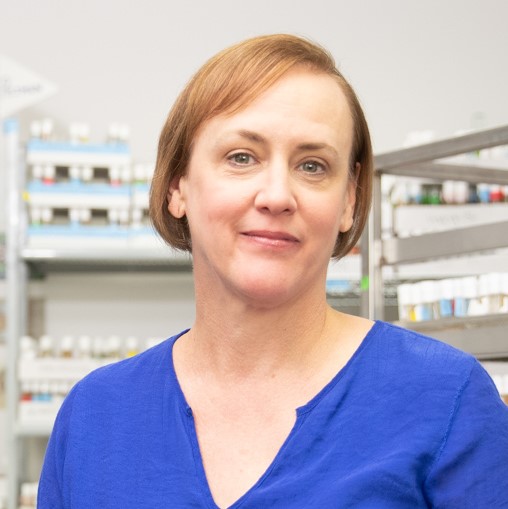by Buck Institute
January 29, 2025 . BLOG
Using Big Data to Help Understand What Exposures May Affect Aging
The exposome includes just about everything but how it operates remains a mystery
 Environmental assaults on the body, such as pesticides, heavy metal ingestion, and even byproducts of metabolism, and how they affect aging had long been on Julie Andersen, PhD’s mind, and the topic of her research for years. The Buck professor was invited to give a talk at a 2020 National Academy of Sciences workshop about how toxins contribute to the development of age-related diseases. At that meeting she was in for a surprise.
Environmental assaults on the body, such as pesticides, heavy metal ingestion, and even byproducts of metabolism, and how they affect aging had long been on Julie Andersen, PhD’s mind, and the topic of her research for years. The Buck professor was invited to give a talk at a 2020 National Academy of Sciences workshop about how toxins contribute to the development of age-related diseases. At that meeting she was in for a surprise.
“I hadn't ever thought much about social factors,” she says. “It was such an awakening for me, since I had always considered a broad swath of external influences, but it just hadn't occurred to me before to think that things like poverty or psychological stress are also contributing.”
These factors and more combine to make up what researchers refer to as the “exposome,” or the total of every exposure throughout one’s lifespan, and the body’s response to them. In addition to the obvious factors that influence health, such as environmental chemicals and contaminants found in water and food, the term has grown to include noise and light pollution, wildfire smoke, odors, sleep, temperature, humidity and socioeconomic issues, including racism and access to care.
Andersen’s realization led her to think more about the wide range of potential assaults on the body that can contribute to aging and age-related diseases. Earlier this year she collaborated on a study with other Buck researchers about the contributions of loneliness, social isolation, and neuroticism to Alzheimer’s disease risk. This work presented the first evidence supported by genetics that reducing loneliness and social isolation may play a causal role in decreasing the risk of Alzheimer’s disease.
“A lot of the emphasis in aging research in the past few decades has been on genetics, but it turns out that 93 percent of what decides how you age is really environmental,” Andersen says.
Within that 93 percent lie all the things that go wrong during aging. “We know that the environment plays a huge role in understanding aging and age-related diseases,” says Andersen. “We just don’t know what the mechanisms are or how the exposome operates.”
Given that the exposome spans just about any conceivable factor, researchers face a daunting challenge to uncover how it is operating. While the traditional research sequence is to start with preclinical trials and move to clinical studies in humans, Andersen says there is a new way: “With funding from Hevolution, we are able to start using human databases to work from the other direction.” The Hevolution Foundation granted $21M last year to form a partnership with the Buck Institute, supporting advancements in therapeutic interventions specifically targeting aging, one of which is understanding the exposome’s impact on healthspan and lifespan.
Basically, she explains, the process is to scan databases that have compiled huge amounts of data on humans through medical records to find common factors that appear to track with various conditions, such as toxins in aging and age-related disease.
Andersen’s lab has been primarily interested in understanding the link between environmental exposures and susceptibility to Alzheimer’s and Parkinson’s disease, especially to the highly toxic herbicide paraquat and to heavy metals, such as iron. Now with the Hevolution Foundation funding, she and her colleagues will be able to look in an unbiased manner to identify novel conserved mechanisms underlying how these environmental factors drive aging and disease. The goal is first to prove something a risk factor for a disease, then uncover its mechanism of action, and finally to determine whether there might be therapeutics based on the mechanism. “What we are interested in at the end of the day in research science is translating this into humans, to help the human condition,” says Andersen.
It feels like exposome research is finally having its day after years of what she says felt like slogging along on the fringes, with most scientists dismissing it as soft science. “When people started discovering genes involved in Parkinson’s and Alzheimer’s diseases, research started swinging to genetics,” she says, and it’s finally swinging in the other direction. In addition to Andersen, the Buck currently has several researchers studying various aspects of the exposome’s influence on aging, including Assistant Professor Chuankai (Kai) Zhou, PhD, who is studying initially in the model system yeast how proteins change with age and to different stressors and whether these translate into the same changes in humans, and Associate Professor David Furman, PhD, who has focused on how environmental exposures affect the immune system and determine rates of aging in different organs.
“Overall, I think it is actually reassuring to know you have some control over age-related diseases,” she says, that fates are not all predetermined by the genetic lottery. “I firmly believe that even if you are genetically prone to something, if you eat a good diet, exercise, and reduce stress, you can decrease your risk. It’s all the things we should be doing anyway!”

SHARE